There is a bit of a rumour going around at school – that the long-term viability of the forge program may be in jeopardy. The issue, is that Willowbank doesn’t have it’s own blacksmith’s shop. Students were previously travelling to the instructor’s studio (a good few hours drive away). This year, the size of the student body has doubled, making the logistics of that a bit more difficult.
Ideally, we would have our own shop at the school, large enough for 10 or more students at a time. The issue with that, is the expense. To equip a large shop that would only be used a few days a year…
So one of the second year students and myself, decided we’d try to build a prototype small, inexpensive forge, that would be suitable for the light work that the students do in their introductory level courses. Something along the lines of the ‘break drum’ forges that a lot of hobbyist smiths start with.
This design is modified from a Popular Mechanics article that I found online. It uses a stainless steel kitchen sink, lined with clay; and off-the-shelf plumbing fixtures for the tuyere.
It may not be pretty, but it works quite well. We’ve got about $60 CAD in materials, and a couple of hours of work into building it. The blower is an old hairdryer. The stand is a cheap portable/folding work bench. The tuyere is made from 1 1/2″ black pipe. It’s a floor flange, two 4″ nipples, a Tee, a cap (for the ash dump) and a 12″ nipple that the hairdryer attaches to. Inside the forge, above where the floor flange enters the sink, we used a cast-iron floor drain cover set into the clay.
We didn’t have any coal on hand, so fired it with charcoal to test it out. Not the ideal fuel for a bottom-blast, but it got fairly hot. The small hairdryer provided a surprising amount of airflow.
I’ve no idea if anything will come of this. But I enjoyed building it, and we have shown (in theory at least) that we had to, we can build something that would get the job done, on a tight budget.
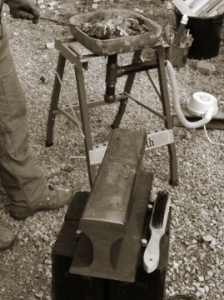
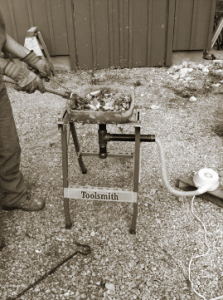
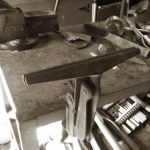
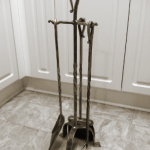



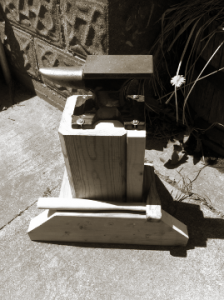
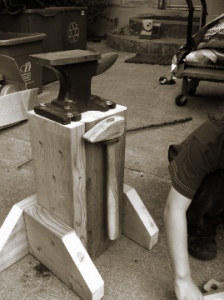
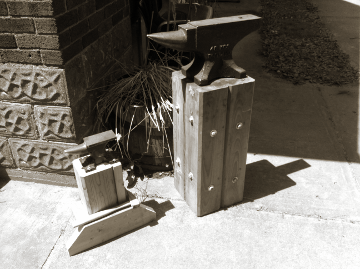
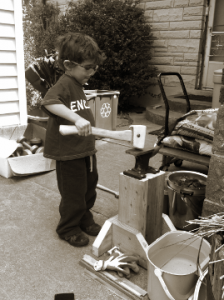
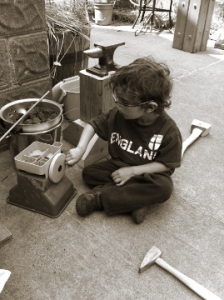
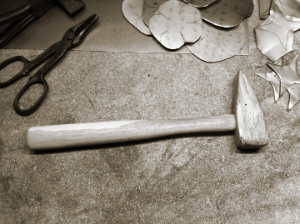
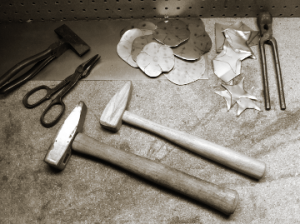
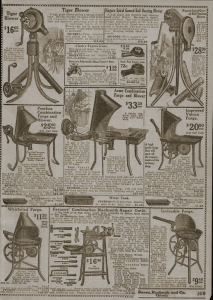
Spammers take note…
Friday, May 18th, 2012Dear Comment Spammers,
Please bugger off.
Kind Regards,
The Forgery
To clarify, I welcome legitimate comments from real people who may have something to say. However spammers should be aware that:
Incidentally, your generic, cookie-cutter comments make absolutely no sense. “I like your site, but it is difficult to find“, etc.
Hmm … well, when I do a Google search for relevant key words (topics that I’m writing about), I’ve typically been somewhere in the first few pages of results, and I’m happy with that.
Oh, and did I already ask you to please bugger off? If not, I meant to.
Tags: blog spam, comment spam
Posted in Tidbits, Wordpress | No Comments »